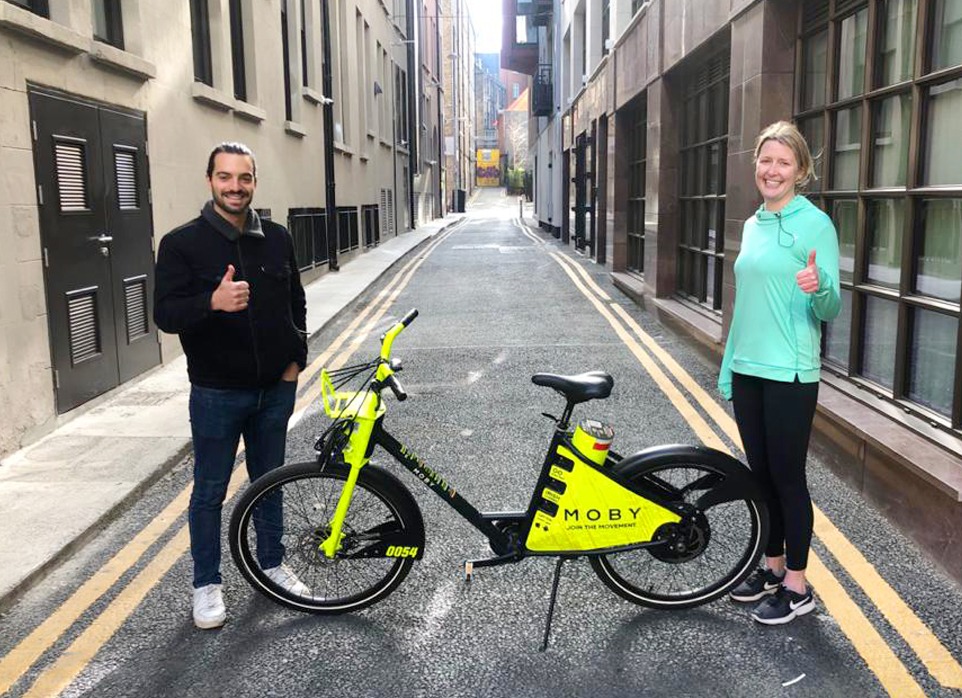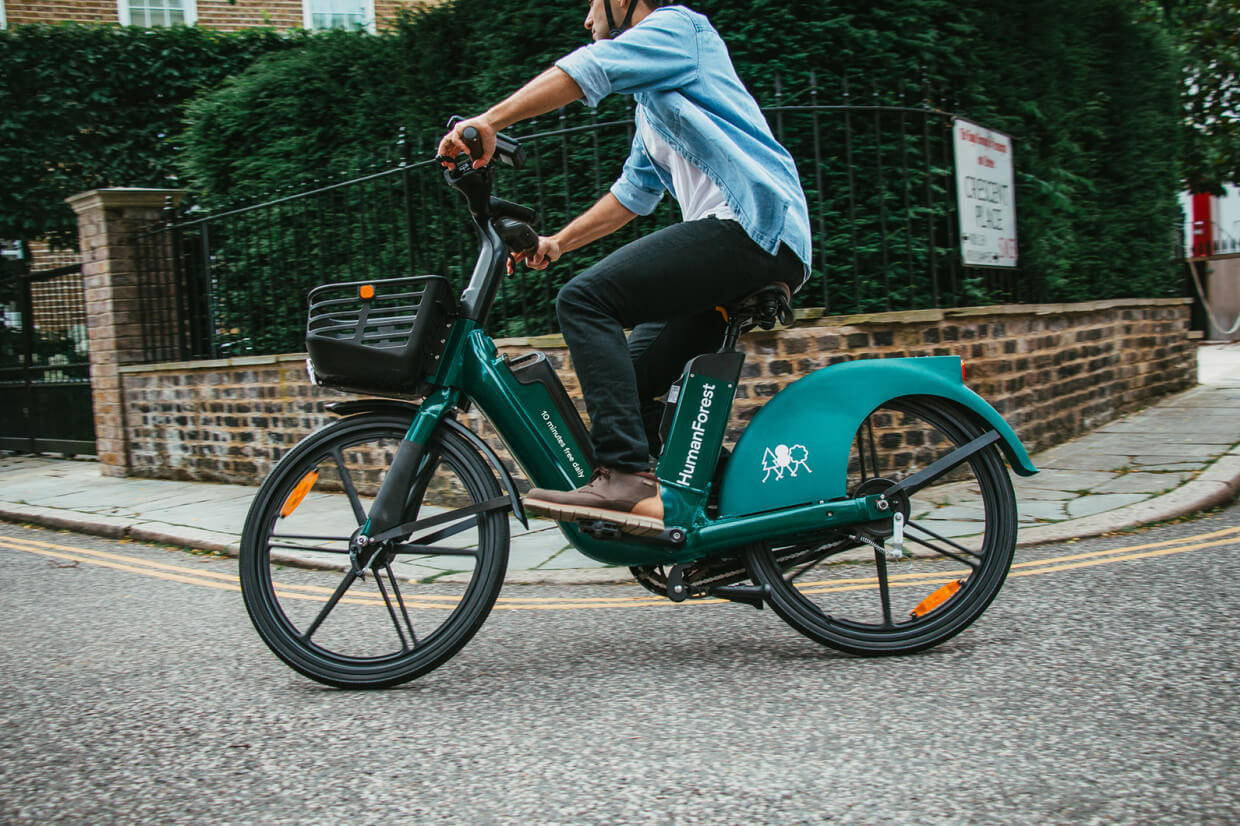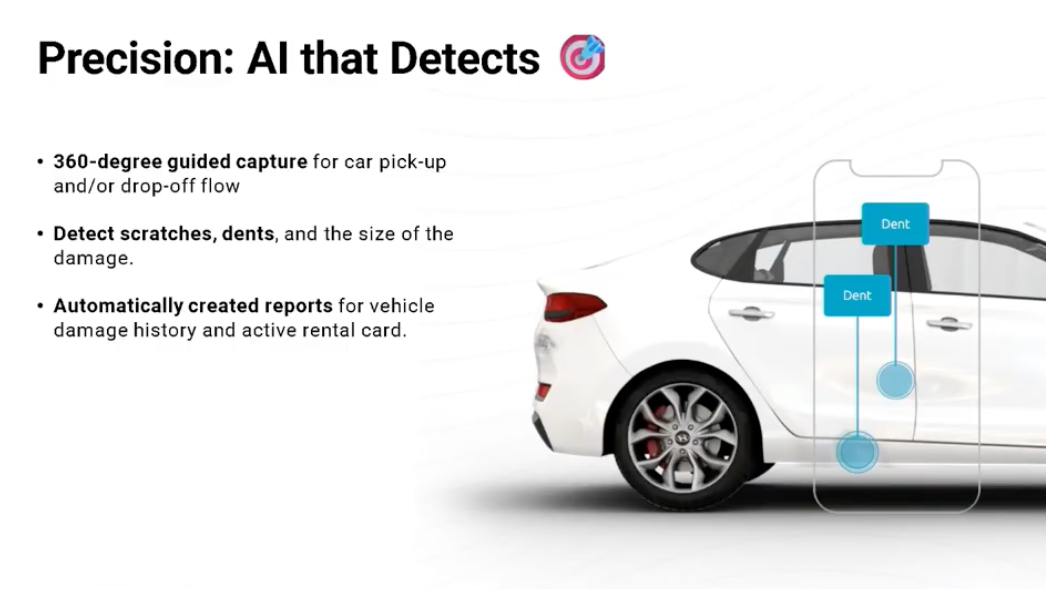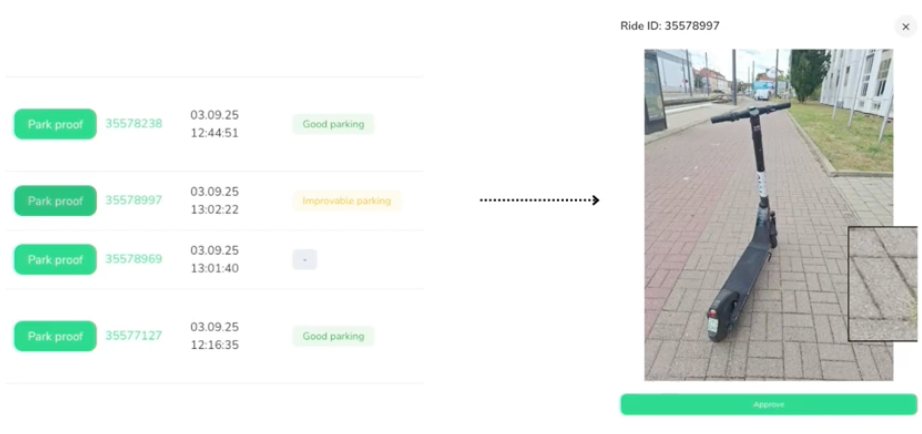
It's easy to get lost in today's mobility landscape. It feels like every year a new type of vehicle hits the streets, and with it comes some weird new term or category adding to an already deeply confounding list – ride-hailing, ride-sharing, carpooling, car-sharing, on-demand rentals, micro-mobility rentals, shared transportation, Mobility-as-a-service,...
No wonder people prefer using and verbing brand names, e.g. “Uber to the airport” or “grab a Bolt”.
In reality, it's not that complicated. Virtually all of the terms listed above are self-explanatory and by the end of this article you'll have a firm grasp on the industry's terminology.
Understanding the distinction between these various concepts is important for entrepreneurs and anyone else looking to set foot in the industry, as using the correct terms:
- Ensures everyone is on the same page,
- Is relevant for regulatory compliance,
- Matters in all your business endeavors from market research to strategy development.
Since the two terms that people get most hung up on are “ride-hailing” and “ride-sharing”, we'll take a closer look at those, and then follow it up with a disambiguation of the other terms on our list.

What is ride-hailing?
Ride-hailing is – surprise, surprise – the hailing of a ride. Much like with a taxi, it involves hiring a person with a car to pick you up and take you to your destination.
So why don't we just call it a taxi service?
When mobility startups like Uber came to prominence in the early 2010s, they did so by disrupting the cab industry through digitalizing the hailing experience and introducing transparent pricing.
Read more: Uber's company history.
In other words, you could now hail a ride through an app on your smartphone and see exactly how much it would cost. Whereas previously, you had to call a taxi service or try to hail one on the street.
So the term “ride-hailing” was coined to distinguish this new type of on-demand app-based taxi service from the more traditional one. However, over the years, the ride-hailing service portfolio has evolved beyond just taxi-like operations and includes things like hiring drivers for moving, or even taking your kids to school. Traditional taxi companies also increasingly make use of a ride-hailing app.
Accordingly, the meaning of ride-hailing is the hailing of on-demand transportation services via an app. Most often it's used in the context of taxi-like services, but it's an umbrella term that can include other services, too.
Fun fact: did you know that Uber was originally named UberCab? Its founders dropped the “Cab” part since they didn't see themselves as a traditional cab service.
What is ride-sharing?
Again – the hint is in the name. At the most basic level, ride-sharing is sharing a ride. But, as with ride-hailing, there's some nuance that's important to understand.
Today, ride-sharing typically refers to multiple passengers sharing a single private ride on a route that passes their various destinations. You can think about it as on-demand carpooling.
Let's unpack this.
Though there are many similarities between ride-sharing and carpooling, they generally differ in terms of ride organization and journeys. Carpooling often happens informally, in the sense that a group of neighbors or coworkers traveling or commuting on the same route will agree to share a ride to, for example, save on gas. Carpooling can also be very sporadic and is primarily organized through private channels or local bulletin boards.
On the flipside, ride-sharing allows a person to carpool with others by simply finding an available seat through an app – drivers digitally share their route and seat availability and passengers can hop into a suitable ride for a small fee.
Notably, ride-sharing is often most popular with busy routes and times of day, as that's when there's highest demand.

There's a reason why a lot of confusion arose regarding the difference between ride-hailing and ride-sharing, namely, the terms were used interchangeably early on. To this day, “Ride-sharing” is sometimes used as an umbrella term for all app-based mobility solutions, though this is going out of fashion, given the clearer differentiation between solutions.
So, while both ride-hailing and ride-sharing are app-based on-demand mobility solutions for getting to a destination in a private vehicle, they differ in passenger count, cost, route, availability, and popularity.
One key component further distinguishing ride-hailing from ride-sharing is the use of advanced software, designed to optimize operations and enhance user experience. Ride-hailing software supports companies in efficiently managing bookings, payments, and communication between passengers and drivers. To explore how this software can improve the efficiency and effectiveness of ride-hailing services, visit our detailed ride-hailing software use cases page.
Other terms commonly used in the mobility industry
Though ride-hailing and ride-sharing are categories you'll hear most often, it's almost inevitable that you'll encounter other terms, which may sow further confusion.
Let's avoid that – here are some quick explanations of other popular terms.
Car-sharing
Car-sharing or vehicle-sharing is most often confused with ride-sharing, but despite sounding similar, they mean completely different things. Car-sharing refers to the app-based short-term rental of cars. The easiest way to remember it is that with ride-sharing people share a single ride, whereas with car sharing people share a single car – again, it's all in the name.
On-demand rentals
On-demand rentals is a category describing vehicles that are instantly available for rent, usually through an app. This includes both micro mobility solutions, like scooters and bikes, as well as larger vehicles like mopeds and cars. For those following along – yes, car-sharing is a type of on-demand rental!
Shared transport
As mentioned in the previous sections, “ride-sharing” is often incorrectly used as an umbrella term for all on-demand app-based mobility solutions. The correct term is shared transport or shared mobility. Shared transport is a broad category that includes both multiple people sharing a vehicle simultaneously (i.e. ride-sharing), as well as individual people sharing a vehicle over time (i.e. car-sharing/on-demand rentals).
Ride-hailing and other on-demand services related to mobility are also often categorized under the shared mobility umbrella.
Mobility-as-a-Service
Mobility-as-a-Service or MaaS is an approach to urban transportation that seeks to integrate a variety of mobility options (both public and private) into a single super-solution that answers a traveler's every mobility need. Often, MaaS solutions are sought out by local municipalities to provide effective alternatives to car use and minimize a city's carbon footprint.
Is the terminology really that important?
As you can see, a lot of the confusing mobility terms are simply categories and categories of categories – don't worry if you can't remember them all. If you know the difference between ride-sharing and ride-hailing that's already plenty.
Anyone in the mobility industry will tell you that it's perfectly acceptable to ask for clarification when talking specifics, as it's common for people to interpret these terms differently, and language barriers can be particularly troublesome for getting on the same page.
That said, you SHOULD pay close attention to the terminology if you're doing research for your own mobility business. A ride-hailing business is completely different from a ride-sharing one, and it's important not to compare apples to oranges during market research, as it can undermine your business from day one.
Other than that, all you have to remember is that ride-hailing is hailing a ride and ride-sharing is sharing a ride. Simple as that.
Click below to learn more or request a demo.

🚗📲 Whether you're renting out cars, bikes or scooters, the best rental businesses in 2025 are fully digital. No more paper contracts or office keys – just tap, unlock, and go. In our latest article, we explore top apps (like Donkey Republic, MOBY Bikes and Forest) that show what a modern rental experience looks like. Plus, we explain where a full platform like ATOM Mobility fits in when you're ready to scale.
Running a rental or sharing business today means delivering a smooth, digital-first experience. Whether you rent cars, bikes, scooters or other vehicles – users expect to book online, pay, verify identity if needed, unlock a vehicle, and ride or drive without extra friction.
To make that happen reliably, you need good vehicle rental software or platform backing your service. Below are some successful examples of apps and platforms that show how this works and what is possible.
Donkey Republic
Operates in several European cities offering shared bikes and e‑bikes. Users find a bike in the app, unlock it with a smartphone, ride, then park at a designated drop‑off spot and end the rental. Pay‑as‑you‑go, daily rates or memberships are all handled via the app.
MOBY Bikes
Targets electric bicycles and e‑cargo bikes across certain regions, with a “tap‑and‑ride” system that uses its proprietary app for booking, unlocking, and rental management. The platform supports mixed-use fleets (shared bikes, cargo bikes, delivery fleet, even B2B rentals), which illustrates flexibility – useful for operators exploring different business models beyond simple consumer rentals.

Forest
It is a dockless e‑bike sharing operator in London. It runs a large fleet and offers bike‑sharing through a mobile app. The service demonstrates how a relatively simple, dockless rental model can scale at urban level using app‑based rentals, unlocking, and flexible parking.

These examples show how micromobility‑focused services already rely on booking, payment, unlocking and fleet management tech – the same core capabilities needed by any modern vehicle rental business.
What makes these apps work – and what to borrow from them
From these operators you can observe several useful traits that a good rental/sharing software should provide:
- Seamless user journey: crate account in seconds → search → book → unlock → ride/drive → return. Users don’t need paper contracts or to meet staff to get a vehicle.
- Flexible pricing & rental models: per-minute, hourly, daily, subscription, memberships – enables both occasional users and frequent commuters.
- Smart access control and vehicle tracking: unlocking via app or smart lock, GPS tracking, drop‑off in defined zones or docking stations, helps maintain order, reduce theft, and support dockless models.
- Support for different vehicle types: from bikes to e‑bikes and cargo bikes – showing that underlying software can be agnostic to vehicle type, useful if you plan a mixed fleet.
- Scalable fleet operations and maintenance: availability updates, booking history, maintenance logs, geofencing or parking zones – these help manage many vehicles across zones without chaos.
These are exactly the kinds of features you need when you move from small‑scale operation to proper fleet business.
Why to choose ATOM Mobility
If you plan to just test the market or to operate a larger and more complex fleet - multiple vehicle types, multiple cities, or advanced operational requirements - a full-stack platform like ATOM Mobility becomes essential.
ATOM Mobility is designed for operators who need full control over the entire mobility operation: booking flows, unlocking logic, payments, KYC/ID verification, backend administration, fleet analytics, dynamic pricing, and multi-modal rentals across cars, scooters, bikes, and more.
The platform provides a unified backend that supports cars, scooters, e-bikes, mopeds, and additional vehicle types within a single system. Operators can manage bookings, payments, users, smart locks or connected vehicles, fleet health, and city-level scaling without fragmenting their tech stack as the business grows.
This approach offers far greater flexibility than single-vehicle or bike-only solutions and removes the need to migrate systems when expanding into new vehicle categories or markets. Check out the full service here.
How to choose: when to use franchising vs full platform
Join a franchising when you:
- prefer operating under an established brand
- value a clear operational playbook and central support
- want simpler marketing thanks to brand recognition
- are comfortable with limited control over technology and product decisions
- accept franchise fees or revenue sharing in exchange for convenience
- don’t need heavy customization or experimentation
Use a full platform (like ATOM Mobility) when you:
- aim to manage a larger, mixed fleet (cars, scooters, bikes, e-bikes)
- need full backend control (admin, analytics, pricing, reporting)
- require payments, KYC/ID verification, and automation built in
- want freedom to customize booking flows, pricing, and partnerships
- plan to scale across cities or add new vehicle types over time
- prioritise brand ownership and customer relationship control
- want no revenue sharing or franchise fees
There isn’t a one‑size‑fits‑all solution
For simple bike or e-bike fleets, the technology barrier is already low. Joining a franchise can be a fast way to get operations running with minimal setup.
However, operators with long-term ambitions - expanding into multiple vehicle types, scaling across locations, or maintaining consistent service quality - typically outgrow narrow tools. In those cases, a full-stack platform like ATOM Mobility offers the flexibility and control needed to support growth without rebuilding the tech foundation later.
Some operators start small and migrate as complexity increases. Others choose to build on a full platform from day one to avoid future transitions. The right choice depends on how clearly you define your growth path, desired level of control, and operational complexity from the start.

📱AI in shared mobility isn’t a future trend – it’s already here, and for good. From detecting car damage to forecasting demand and verifying parking in real time, operators are using AI to reduce manual work and run more efficient fleets. In this new article, we break down 3 real use cases already live on the ATOM Mobility platform: 👁️ Vision AI, 🔍 Precision AI, 📊 Prediction AI. See how AI is changing shared mobility, and how you can start using it now.
Artificial intelligence is no longer just a trend in mobility. For modern vehicle sharing and rental services, AI is already solving real operational problems and unlocking new ways to grow. At ATOM Mobility, several AI-powered features have already been implemented into live products and tested by operators across Europe.

This article shares three real-world AI use cases that are already helping operators reduce manual work, improve asset control, and better match vehicle availability to demand.
1. Vision AI: Camera-based parking control for micromobility
Micromobility parking continues to be a challenge in cities where dockless vehicles can end up blocking sidewalks, crossings or entrances. Manual checks are costly and often too slow to solve the problem in real time.
ATOM Mobility now uses computer vision to solve this. With Vision AI, riders take a photo when ending their ride. The system analyses the image using a neural network to understand if the vehicle is parked correctly – within a designated zone and without creating obstructions. If not, the app notifies the user and prevents trip completion until the parking is corrected.Each parking photo is automatically tagged as “Good parking”, “Improvable parking” (the user receives guidance on how to improve the parking), or “Bad parking” (the user is asked to re-park).
If the user fails to submit a “Good parking” photo after several attempts, the system will accept the photo with its current tag (“Improvable” or “Bad parking”) and flag it in the dashboard for further customer support review.
This solution has been live with many operators already. It helps reduce complaints, improve compliance with city regulations, and lowers the need for manual reviews.

2. Precision AI: Detecting car rental damages with cameras and machine learning
In traditional car rental, damage inspection is slow, manual, and often inconsistent. With self-service rentals becoming more popular, operators need a smarter and faster way to verify a vehicle’s condition between trips.
ATOM Mobility has integrated AI-powered damage detection using computer vision. Customers scan the vehicle at pick-up and drop-off. The app compares images and flags scratches, dents, or other visible damage with high accuracy. This allows operators to quickly assess responsibility and reduce disputes.
The system helps protect the fleet, lowers repair costs, and adds trust for both users and operators. It’s especially useful for car sharing and self-service rental models where physical handovers are skipped.
3. Prediction AI: Forecasting demand and automating vehicle relocation
One of the biggest cost factors in shared mobility is rebalancing the fleet. If scooters or cars are idle in the wrong location, revenue is lost. At the same time, relocating vehicles manually is expensive and not always efficient.
ATOM’s AI models use historical trip data, usage trends and contextual signals (such as day of the week or weather) to forecast demand and suggest the best relocation zones. This gives operators a map of where and when to move vehicles – improving utilisation and saving time.
The system can even be combined with automated relocation logic, where users are incentivised to park in high-demand areas. This shifts part of the rebalancing cost from operators to riders and keeps the fleet productive.
Why this matters now
AI tools are finally reaching the stage where they can operate reliably, even in complex environments like cities. These examples are not abstract ideas or lab tests. They’re active features helping ourcustomers run leaner, smarter fleets today.
For micromobility operators, Vision AI reduces complaints and ensures regulatory compliance. For car rental providers, Precision AI saves hours of staff time and improves trust. And for both, Prediction AI improves margins by making sure vehicles are where users need them.
What’s up next?
These are just the first steps. AI in mobility will continue to expand with smarter pricing engines, voice-based support, predictive maintenance, and more. But the examples above already prove that even small AI integrations can bring major improvements.
At ATOM Mobility, we continue building these tools directly into our platform so that operators don’t need to develop them in-house. If you want to see how these AI-powered features work in action, get in touch with our team.
AI in shared mobility is not about replacing people. It’s about giving operators better tools to run faster, smarter, and more efficient services.


